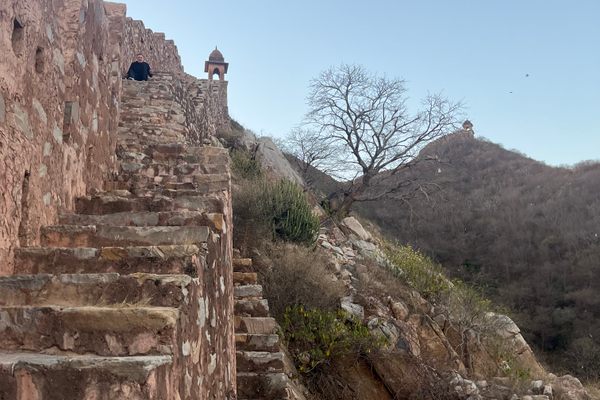Cyclopean Wall of Ibros
Built thousands of years ago, this wall is still part of the urban layout of this village.
A legendary Iberian king gave his name to this village, which is located in the province of Jaen. The history of the Iberian people is strong in this region, and can be seen in many archaeological sites and museums. One of those sites is the Cyclopean Wall of Ibros, so-called because of the size of the stones with which it was built. It was said that only a cyclops (a mythological being with a single eye and enormous strength) could move these stones.
This wall was built to serve defensive purposes. It was originally formed by a quadrangular enclosure that surrounded the perimeter of the settlement. Today we only preserve this corner of 12 and 13 meters long (46 and 42.6 feet) respectively. The exact date of its construction is not known, but the wall is estimated to have been built between the 11th and 6th centuries B.C.
The two sections of the wall meet at a 90-degree angle. The width of the wall varies—the thinnest parts measure about two meters (6.5 feet), while the widest parts measure about six meters (19.6 feet). The height of the wall varies as well, ranging between three and four meters (9.8-13.1 feet). The difference in wall height is due to the irregular topography of the terrain, which made it necessary to equalize the different parts of the wall. Part of the additional height is given by a large mass of rock that serves as a seat for the wall and was carved to make it fit within the structure.
The fortress was used during the Muslim period as confirmed by an Arab tombstone that was found embedded here. The cyclopean wall later became part of the perimeter of a domestic building, which it still is today.
Know Before You Go
Ibros is 4.4 km (2,73 miles) from the monumental town of Baeza by the local road C-326
Plan Your Trip
The Atlas Obscura Podcast is Back!





















Follow us on Twitter to get the latest on the world's hidden wonders.
Like us on Facebook to get the latest on the world's hidden wonders.
Follow us on Twitter Like us on Facebook